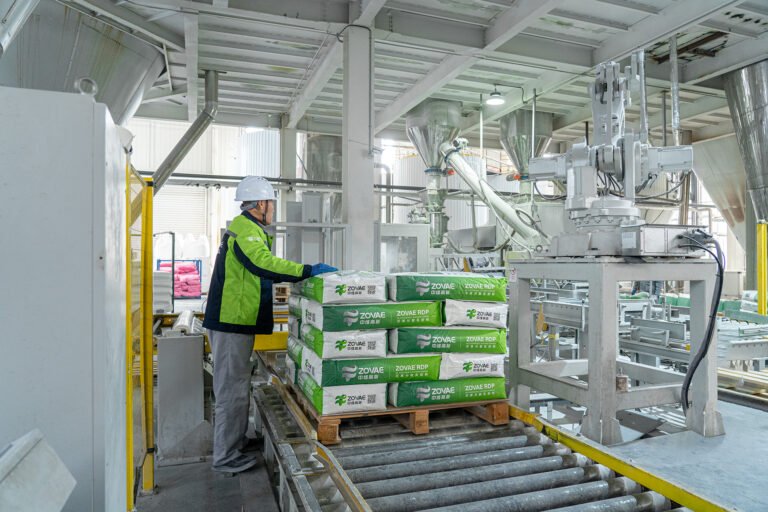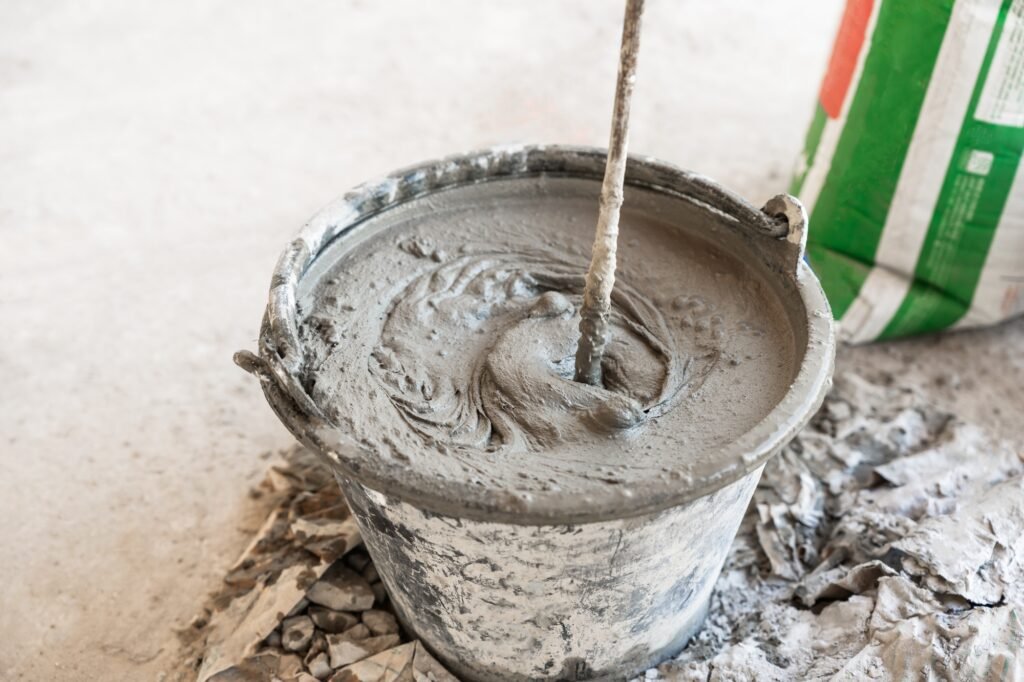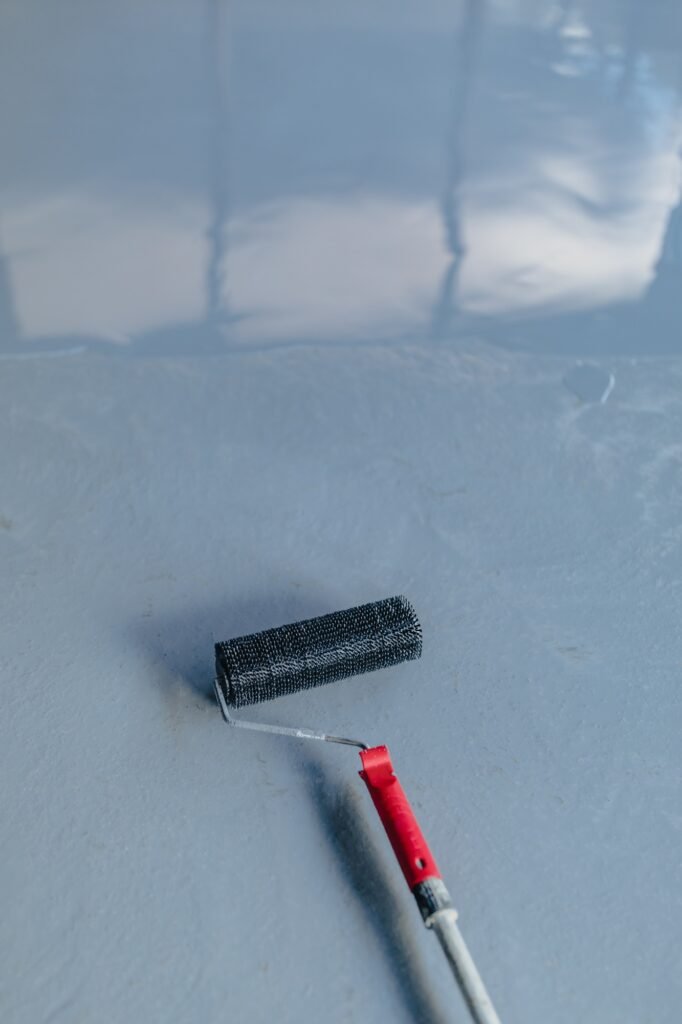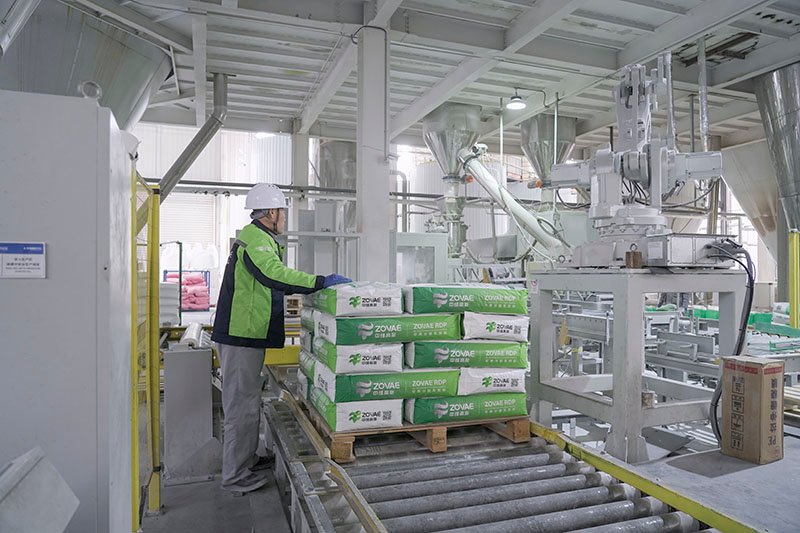Executive Summary
At first glance, foam may seem benign, but it can wreak havoc on production lines, degrade surface finishes, and compromise the integrity of hardened materials. In industries ranging from manufacturing to construction, entrained air and surface foam diminish operational efficiency, alter flow properties, obstruct pumps and nozzles, create surface imperfections like pinholes and craters, and, in cement-based formulations, reduce structural strength by forming microvoids. Defoamers—alternatively termed antifoaming agents—are specialized additives engineered to suppress foam and facilitate the release of trapped air. This extensive guide explores the origins of foam, the operational principles of defoamers, the unique advantages and limitations of various defoamer types, and provides actionable advice on selection, dosing, and performance validation in cementitious mortars, paints, coatings, and broader industrial processes. A particular emphasis is placed on ZOVAE Powder Defoamer, an advanced solution tailored for dry-blend mortars, tile adhesives, self-leveling compounds, and gypsum plasters.
1. The Importance of Foam Management
Foam is far more than a superficial nuisance; it represents a significant obstacle to both process efficiency and product quality.
- Structural Weakness: Foam traps air within mortars, grouts, and coatings, forming vulnerable zones that can decrease compressive strength, lead to blistering, and impair bonding.
- Operational Disruptions: Overflow from tanks and mixers results in material loss, safety risks, and additional cleaning efforts, disrupting workflows.
- Equipment Interference: It hampers the function of metering pumps, flowmeters, filtration systems, and spray equipment, causing inconsistent dosing, incorrect application ratios, and unplanned downtime.
- Surface Defects: In paints and floor toppings, foam manifests as visible imperfections—craters, pinholes, fisheyes, and uneven textures—that necessitate expensive rework and damage project timelines.
Implementing effective foam control measures optimizes manufacturing operations, ensures consistent quality, and enhances the performance of final products. In construction materials specifically, managing foam directly contributes to long-term durability and value over a product’s lifecycle.
2. Understanding Foam: Formation and Persistence
Foam consists of gas bubbles dispersed within a liquid medium, stabilized by surface-active agents. It becomes problematic when the thin liquid films, or lamellae, between bubbles resist breaking down. Several contributing factors sustain foam stability:
- Surface-Active Agents: Surfactants and wetting additives lower surface tension, forming flexible films that counteract drainage through the Marangoni effect, a phenomenon where surface tension gradients resist film thinning.
- Solid Reinforcements: Fine particles or polymeric materials can aggregate within lamellae, mechanically reinforcing bubble walls.
- Viscosity Effects: Elevated viscosity in the liquid phase slows drainage, prolonging bubble life.
- Gas Replenishment: Internal gas production, whether from chemical reactions or biological processes like fermentation, continuously regenerates bubbles, outpacing natural collapse.
Foam manifests in distinct forms:
- Macrofoam: Large, noticeable bubbles on the surface, prone to causing tank overflows and creating craters in coatings.
- Microfoam: Tiny bubbles dispersed throughout the material, often undetected until post-drying or curing, revealing itself as pinholes or voids in the solidified product.
- Entrained Air: Dissolved or trapped air not visually apparent as foam but detrimental nonetheless, reducing density and mechanical strength in materials like concrete and mortars.
Foaming is influenced by variables such as surfactant concentration and type, solids content, ambient temperature, pH levels, mixing intensity, available gas, and process duration. As a result, no single antifoam solution fits all scenarios; the optimal defoamer must align with both the chemical composition and specific operational conditions of the system.
3. Mechanism of Defoamers: Breaking the Bubble Barrier
Defoamers operate by destabilizing bubble structures, prompting film thinning, rupture, and drainage. While formulations vary widely, their effectiveness generally hinges on three interconnected processes:
- Penetration (Entry): A defoamer droplet breaches the bubble’s liquid film. This step relies on a delicate balance of interfacial tensions among the liquid, gas, and defoamer phases, requiring the defoamer to be hydrophobic and sufficiently incompatible with the surrounding medium to infiltrate the film.
- Dispersion (Spreading): Upon entry or contact with the interface, the defoamer extends across the film, displacing surfactant-laden liquid and diminishing local surface elasticity. Effective spreading amplifies the destabilized area, hastening foam collapse.
- Rupture (Bridging-Dewetting): Solid components within the defoamer, such as hydrophobic silica particles, span the film, forming weak points that lose wetting properties and break apart.
A critical distinction exists between additives that “defoam” by collapsing existing bubbles and those that “antifoam” by preventing bubble formation. Many commercial defoamers perform both functions, though their primary strength often leans toward one. Additionally, deaeration—the process of expelling dissolved or entrained air from the bulk material—is a related mechanism. Water-based defoamers and specific EO/PO copolymers are particularly adept at deaeration, even if their immediate foam-knockdown capability is less pronounced.
4. Major Categories of Industrial Defoamers
Each defoamer category addresses unique challenges through distinct chemical compositions. Below, we detail the primary types, outlining their makeup, advantages, drawbacks, and typical industrial applications.
4.1 Oil-Based Defoamers
Composition and Design
- Base Carriers: Typically mineral oil, white oil, paraffinic oil, or, in cases prioritizing regulatory or environmental concerns, vegetable oils.
- Active Ingredients: Include waxes like paraffin or fatty alcohols, ethylene bis stearamide (EBS), hydrophobic silica, and minor surfactant additions to manage dispersion and droplet size stability.
Advantages
- Rapid and potent foam suppression, effective even against robust surfactant systems.
- Highly successful in applications like paper and pulp processing, wastewater management, and coating formulation during let-down phases.
Drawbacks
- Risk of residues in high-purity or high-gloss applications, potentially leading to cratering or adhesion issues if over-applied.
- Susceptibility to thermal or oxidative degradation depending on carrier oil quality, with some variants prone to yellowing or breakdown over time.
Common Uses
- Paper production (stock preparation, white water circuits), wastewater treatment facilities, coating dispersion and grinding stages, and general chemical processing environments.
4.2 Powder Defoamers
Composition and Design
- Solid Carriers: Often micronized silica or similar mineral bases, occasionally blended with hydrophobized waxes or oils.
- Intended Use: Formulated for incorporation into dry powder systems, activating upon hydration.
Advantages
- Perfectly suited for pre-mixed dry mortars and plasters in factory settings, offering easy metering, minimal dust, and potent defoaming and deaeration during mixing.
- No emulsification needed; maintains even distribution in dry blends, releasing active components during water addition and shear.
- Excellent compatibility with cement, gypsum, redispersible polymer powders (RDP), and cellulose ethers.
Drawbacks
- Requires adequate mixing energy and moisture to become active.
- Irrelevant for construction taste or odor concerns but unsuitable for food-contact applications due to solid form.
Common Uses
- Tile adhesives, self-leveling underlayments (SLU), repair mortars, gypsum plasters, joint fillers, and grouts, where powder defoamers mitigate pinholes, enhance flow, and boost final strength by reducing trapped air.
Zovae Highlight
- Zovae Powder Defoamer is specifically crafted for dry-mix production lines, featuring micronized silica carriers for seamless blending and reliable performance. It integrates flawlessly with HPMC/MHEC cellulose ethers, Zovae RDP, cement, and fillers, typically dosed at 0.05–0.20% by dry mix weight, with adjustments based on sand particle size, polymer content, and mixing conditions.
4.3 Water-Based Defoamers
Composition and Design
- Formulation: Emulsions of waxes or oils in water, stabilized often by fatty acid soaps or nonionic surfactants.
- Enhancements: May contain hydrophobic particles to aid in film bridging and rupture.
Advantages
- Simple integration into aqueous formulations, often serving dual purposes as deaerators.
- Cleaner profile with reduced residue risks and good rinse-off properties.
Drawbacks
- emulsion stability can falter under high electrolyte concentrations or extreme pH levels, requiring careful storage management.
- Less effective against densely stabilized foams compared to silicone-based alternatives.
Common Uses
- Latex paints, water-based inks and adhesives, adhesive primers, and select food-processing applications where regulatory compliance is secured.
4.4 Silicone-Based Defoamers
Composition and Design
- Core Components: Polydimethylsiloxane (PDMS) oils paired with hydrophobic silica in various bases, available as emulsified silicones, non-aqueous dispersions, or organomodified siloxanes.
Advantages
- Exceptionally efficient and quick to act across wide temperature and pH spectrums, achieving results at minimal dosages.
- Ideal for intense foaming scenarios in oil and gas drilling fluids, industrial cleaners, crude oil separation, and high-speed coating operations.
Drawbacks
- Potential for silicone residues to cause cratering or intercoat adhesion problems in waterborne paints and clear coatings if not carefully dosed or selected.
- Often less suitable for cementitious dry-mix due to compatibility and dispersion challenges; powder defoamers are preferred in such cases.
Common Uses
- Paints and coatings (with caution), oil and gas fluid management, industrial detergents, wastewater treatment, and fermentation processes where silicone use is permissible.
4.5 EO/PO-Based Defoamers
Composition and Design
- Chemical Basis: Block copolymers of ethylene oxide (EO) and propylene oxide (PO), typically liquid and nonionic, customized for specific hydrophilic-lipophilic balance (HLB) profiles.
Advantages
- Strong deaeration and wetting capabilities with moderate defoaming action; minimal residue and enhanced clarity in transparent systems.
- Valuable in scenarios where silicone use is restricted and oil-based residues are unwanted.
Drawbacks
- Limited effectiveness against highly stabilized, surfactant-heavy foams, often necessitating higher doses or combination with another defoamer.
Common Uses
- High-surfactant detergents, textile processing solutions, industrial cleaning fluids, and specific waterborne adhesives and clear coatings.
4.6 Alkyl Polyacrylates (Air-Release Agents)
Composition and Design
- Formulation: Acrylic-based polymers designed for non-aqueous environments, functioning more as air-release facilitators than traditional foam suppressants.
Advantages
- Facilitate air release in solvent-based systems without the typical silicone-induced issues affecting surface wetting or recoatability.
Drawbacks
- Generally incompatible with water-based formulations.
- Focus on preventing microfoam and entrainment rather than tackling pronounced surface foam.
Common Uses
- Solventborne coatings, lubricants, petroleum processing, and adhesives where clarity and recoating properties are critical.
Additional Niche Chemistries
- Fluorosilicone Defoamers: Offer exceptional chemical resistance for extreme solvent or chemical exposure.
- Organomodified Silicones: Enhance compatibility in delicate coatings and inks.
- Bio-Based Oil Defoamers: Support sustainability goals in applications with moderate performance needs.





